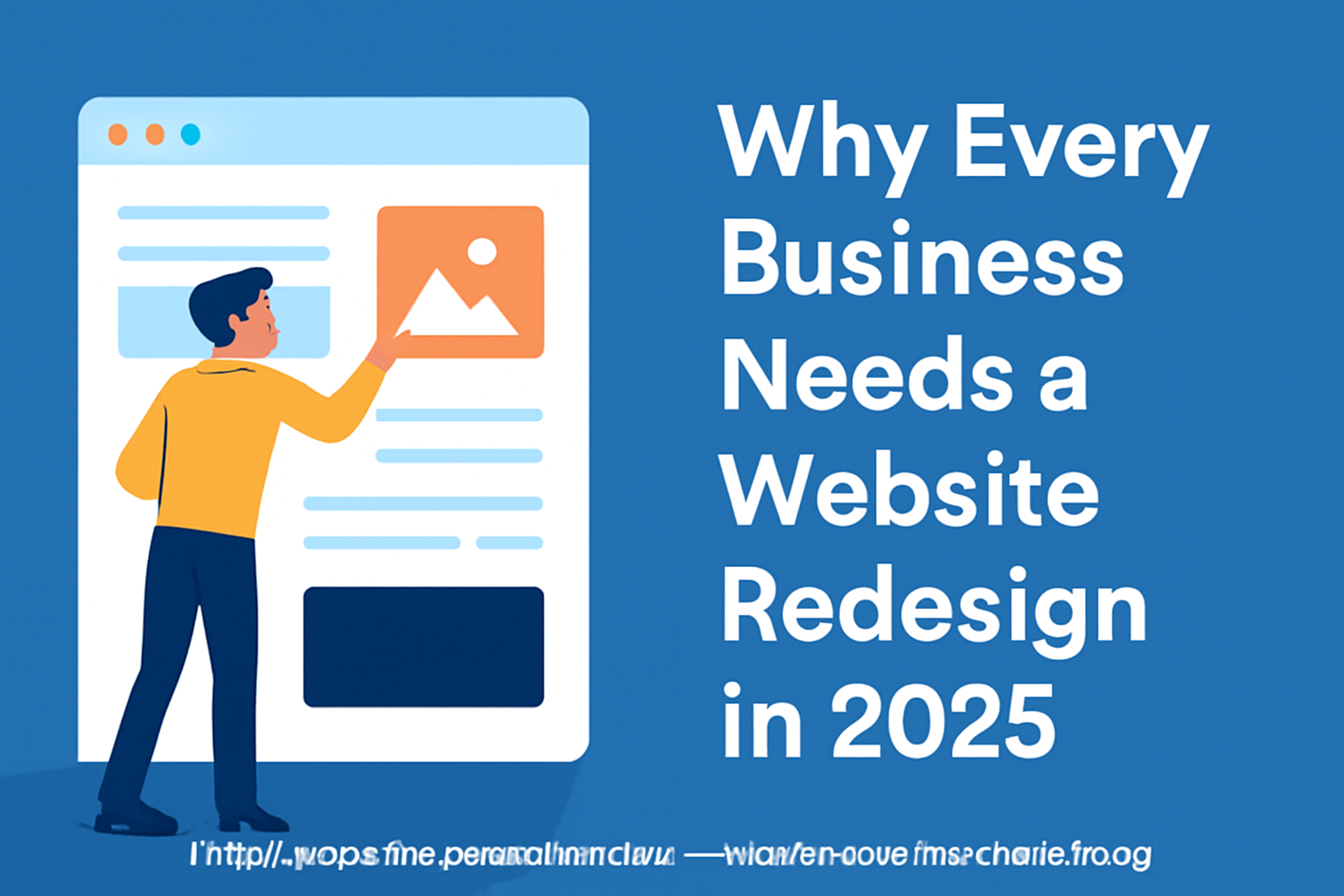Blog Details

Why Every Business Needs a Website Redesign in 2025
Introduction
As technology advances and user expectations evolve, businesses must adapt to keep pace. The digital landscape is changing rapidly, and websites that were designed just a few years ago may no longer meet the demands of today’s users. In 2025, businesses must continually update their websites to ensure they provide a seamless user experience, enhanced performance, and up-to-date design elements. This blog post explores why every business needs a website redesign in 2025 to stay competitive and ensure its digital presence remains relevant.
The Mobile-First Approach
Mobile-first design is no longer a choice but a necessity. With more than half of web traffic now coming from mobile devices, businesses that don't prioritize mobile users risk alienating a significant portion of their audience. In 2025, a mobile-first approach is crucial for both user experience (UX) and SEO.
Why it’s important:
- Google’s Mobile-First Indexing: Google now predominantly uses the mobile version of a website for indexing and ranking. Websites that aren’t optimized for mobile will struggle to perform in search results.
- User Expectations: Mobile users expect websites to load quickly and function seamlessly. A mobile-optimized design ensures that your site offers the best possible experience to mobile visitors, reducing bounce rates and improving engagement.
By adopting a mobile-first approach in your website redesign, you’ll not only meet user expectations but also improve your website’s search engine rankings.
Improved User Experience
A website redesign provides the opportunity to enhance the user experience (UX), making your website easier to navigate, more intuitive, and faster to load. UX directly impacts how users perceive your brand. A website that’s difficult to use or slow to load will turn potential customers away.
Why it’s important:
- Simplified Navigation: A fresh design can streamline your website’s navigation, making it easier for visitors to find what they’re looking for.
- Engagement & Retention: A well-designed, user-friendly site encourages users to stay longer, reducing bounce rates and increasing the chances of conversion.
- Accessibility: Redesigning your website gives you the chance to make it accessible to all users, including those with disabilities, by improving color contrast, text sizes, and keyboard navigation.
By improving the user experience, you enhance the overall perception of your brand and keep customers engaged.
SEO Optimization
Search engine optimization (SEO) plays a vital role in ensuring your website ranks well in search engines like Google. A website redesign allows you to integrate the latest SEO best practices, from keyword optimization to site speed improvements.
Why it’s important:
- Technical SEO: Older websites often have technical issues that hurt their SEO rankings, such as slow page load times or broken links. A redesign can address these issues by optimizing code, compressing images, and ensuring fast load times.
- Mobile Optimization for SEO: As mentioned earlier, mobile-first indexing means that a mobile-friendly website is essential for SEO.
- Content Optimization: A redesign provides an opportunity to rework your content and optimize it for targeted keywords, making it easier for search engines to crawl and index your pages.
An SEO-optimized website ensures that your business is visible to potential customers searching for your products or services.
Performance Enhancements
Website performance, particularly page speed, is a critical factor in user experience and SEO. Slow websites frustrate users and lead to high bounce rates. A website redesign can make your site faster, more efficient, and better equipped to handle increased traffic.
Why it’s important:
- Faster Load Times: Slow load times negatively affect user experience and SEO rankings. A redesign allows you to optimize images, streamline code, and leverage modern technologies like CDNs (Content Delivery Networks) to improve performance.
- Scalability: As your business grows, your website needs to handle increased traffic. A redesign can ensure that your website can scale seamlessly to accommodate future growth.
By improving website performance, you ensure that users have a fast, smooth browsing experience that keeps them engaged with your content.
Reflecting Your Brand’s Evolution
Your brand is constantly evolving, and your website should reflect that. As your business grows, your website needs to evolve to match your updated branding, messaging, and goals. A redesign provides the perfect opportunity to modernize your website and ensure it aligns with your current brand identity.
Why it’s important:
- Brand Consistency: Your website is often the first impression users have of your brand. A modern, cohesive design reflects your company’s values, messaging, and aesthetic.
- Fresh and Modern Look: Trends in web design change rapidly. What looked modern five years ago may now look outdated. A redesign allows you to stay ahead of design trends and create a visually appealing site that resonates with your audience.
A redesign is your chance to ensure that your website accurately represents who you are as a business and how you want to be perceived.
Conclusion
In today’s fast-paced digital world, a website redesign is more than just a cosmetic update. It’s an investment that pays dividends by improving user experience, SEO, performance, and brand consistency. By keeping your website modern and user-friendly, you ensure that your business remains competitive and relevant in an ever-changing digital landscape.
Call-to-Action
Is your website ready for a redesign? Contact NexCodeForge today to discuss how we can help you create a modern, high-performing website that reflects your brand and meets the needs of your customers.
This article really helped me understand Laravel relationships better. Thanks for breaking it down so clearly!
Nainsy
Such a very interesting and informative post. I got a lott of knowledge with this blog and want more blogs related to this.
Mayank Kumar Singh
Wow, I didn’t know that! Thanks for the eye-opening information.
Mohit

Leave a Reply
Your email address will not be published.